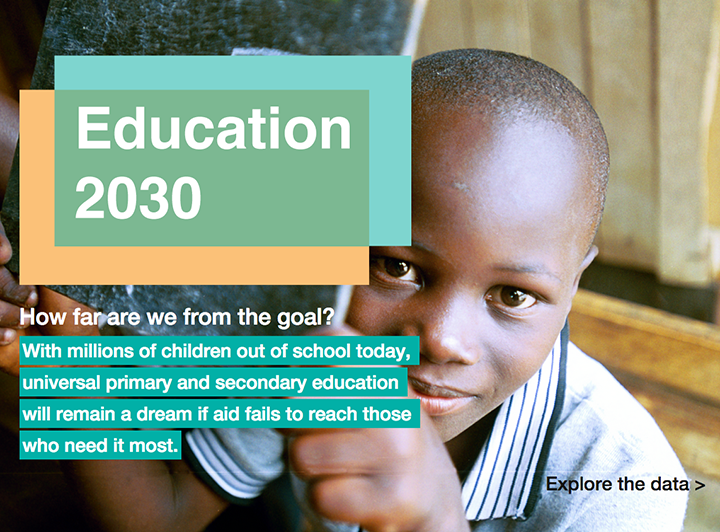Does education aid reach the countries that need it most?
The new Sustainable Development Goal to achieve universal primary and secondary education by 2030 marks a victory for activists fighting for the right to education. But in the bid to expand access to secondary education, there is real fear that the most marginalised children will be left behind.
To reach every child, an extra $39 billion is needed each year, according to estimates from UNESCO/GMR. To fill this gap, a new Commission on Financing Global Education brings together 20 world leaders, with Gordon Brown as chair, to find alternative sources of funding and better deploy current resources.
To help show the way forward, the UNESCO Institute for Statistics (UIS) has developed a set of interactive maps highlighting the gap between the SDG promise and reality. There are 124 million children and youth excluded from school and aid to education is slowing. In light of the new goal, the maps shed light on a crucial question: does aid reach the countries with the greatest needs?
The visualization contrasts data on aid to basic education from the OECD-DAC Creditor Reporting System with UIS data on out-of-school children -- a proxy for exclusion from schooling. Data show that the aid flow is not necessarily reaching countries with high rates of out-of-school children.

For example, Mali, where 31% of children of primary school age are not enrolled in school, received about USD 44 million in aid to basic education between 2012 and 2013. Whereas neighboring Niger, with an out-of-school rate of 37% received a total of USD 26 million. And conflict-ridden Sudan, where 46% of children are out of school, received about USD 7 million.
The data also show the gap between the new global goal to provide 12 years of schooling and the number of years countries currently guarantee. For example, in most countries, primary and secondary education corresponds to about 12 years of schooling. Data show that 76 countries or 37% already have in place laws requiring 10 to 12 years of compulsory education. In another 64 countries, or 31%, compulsory education spans 7 to 9 years, which typically corresponds to the lower secondary level. In contrast, primary education (typically ranging from 5 to 6 years) is compulsory in 24 countries or 12%.
To make real progress by 2030, the international community must increase investment in education or jeopardise the schooling of millions of children and adolescents.
To join the movement of global citizens and organizations taking up the challenge to ensure 12 years of quality education for all, share the data on social media or embed the visualization on your site or blog.
Additional resources:
29/09/2015